by Natalie Taylor with photos by Jack Paulus
La Parroquia de San Miguel Arcangel—the parish church of St. Michael the Archangel—is without doubt the representative building in our city. It has been said that it is the most photographed church in Mexico, and for good reason. The pink façade made of cantera (volcanic quarried rock), appears whenever San Miguel de Allende is featured in any article. The unique look is a combination of gothic, neoclassical, with a bit of a Disneyesque castle, and a touch of surrealism. The original church was built sometime in the early 17th century, but the two towers and frontage were crumbling after 200 years.
In 1880, President Porfirio Diaz had embarked on a beautification campaign of Mexico's green spaces, and buildings. In 1880, remodeling of the parish church of San Miguel was started. A master stonemason, Zeferino Gutierrez, was contracted to improve the church appearance. Although not an architect, Gutierrez had successfully embellished other church exteriors, and was chosen to lead the project. According to local lore, he looked at postcards of churches around the world, and the one that struck him as the perfect model was the cathedral of Cologne. It is said that this is the building that our parish most resembles. Whether this is true or not, is anyone's opinion and guess. What we do know, however, is that the final result is a uniquely beautiful building.
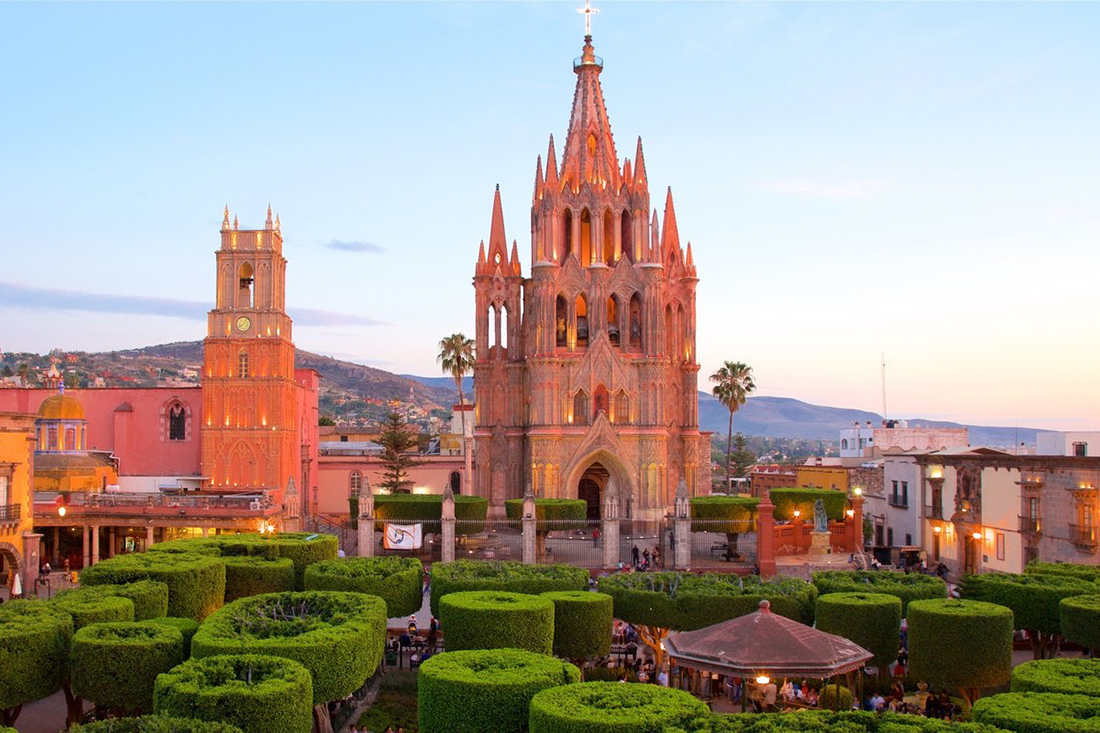
However, just as with a human being, there is more to the Parroquia than its exterior. The interior is as grand as any cathedral. But it is not a cathedral, because there is no bishopric in San Miguel de Allende—a requirement for a church to be designated a cathedral. Maximillian I, Emperor of Mexico, visited the Parroquia in 1865 (15 years before the new façade), and was so impressed with the crypt, he declared it was "worthy of an emperor"!
There is also a crypt beneath the floor in front of the altar, which is opened and can be visited during Day of the Dead celebrations. Here is inscription on the tomb of Father Villegas, parish priest from 1736 to 1776. He was originally buried in the parish cemetery, but in 1842 his remains were transferred to the crypt.
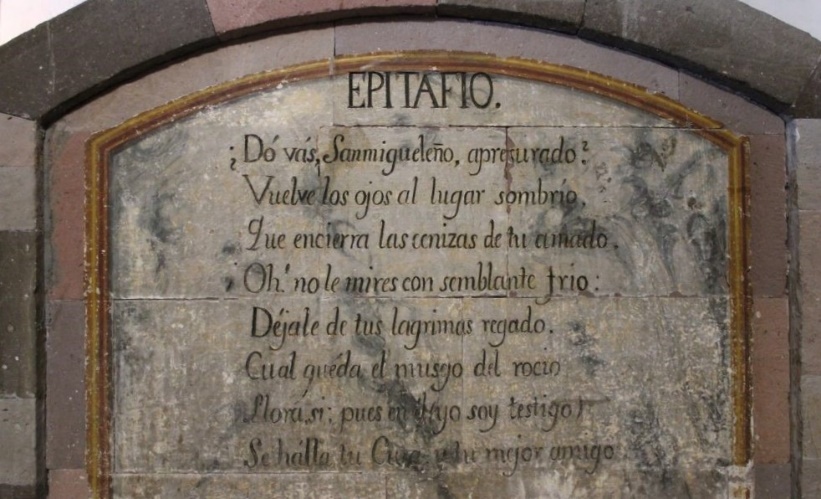
Epitaph: Where do you go, hasty Sanmiguelense? Turn your eyes to this somber place that captures the ashes of your loved one. Oh, do not gaze upon it with a cold eye, let your tears rain upon it, that remains like the moss of dew. Weep, yes, because here I am witness to it, this is where you find your priest, and your best friend.
Among the noted dead resting here, is Francisco de Uraga, one of the conspirators of the War of Independence. He worked with Ignacio Allende, and unlike the latter, did see the birth of Mexico as a sovereign nation. He died in 1830, nine years after the Mexican Declaration of Independence. Another is Remigio Gonzalez, who was chaplain of the church in Atotonilco, where Allende and Father Hidalgo stopped with the insurgent army on their way to San Miguel, on September 16, 1810. Remigio Gonzalez was also a sculptor who carved the figure of the Lord of the Column, which is brought annually to San Miguel in procession from Atotonilco. His brother, Felipe, also buried here, was the conspirator who advised Allende to have Hidalgo lead the insurrection. That turned out to be a bad idea. But that's a whole other story!
Inside the church there are numerous, ancient works of art. At least three major Novo-Hispanic painters have their works on display here. The first one is called Animas—Souls—and it represents the souls of Purgatory. The painting was done by Juan Baltasar Gomez, and is one of the most ancient works, darkened with age. When you walk to the back of the church along the left, locate the Lord of the Conquest statue (Jesus on the cross), and when you face it look to your far left and you will spot the Baltasar painting. It has a large chandelier before it, which does not allow for a clean photograph.
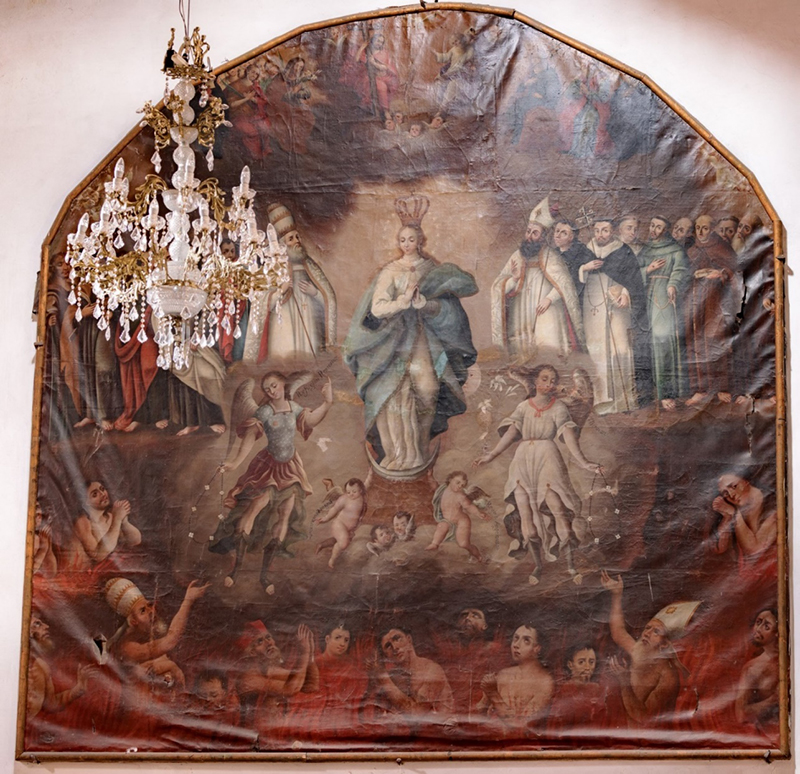
Over the doorway of the Meditation Chapel, to the right of the Lord of the Conquest, is a painting by Juan Rodriguez Juarez. It is the Ascension of the Virgin, and is similar to one that hangs in Las Monjas, by the same painter.
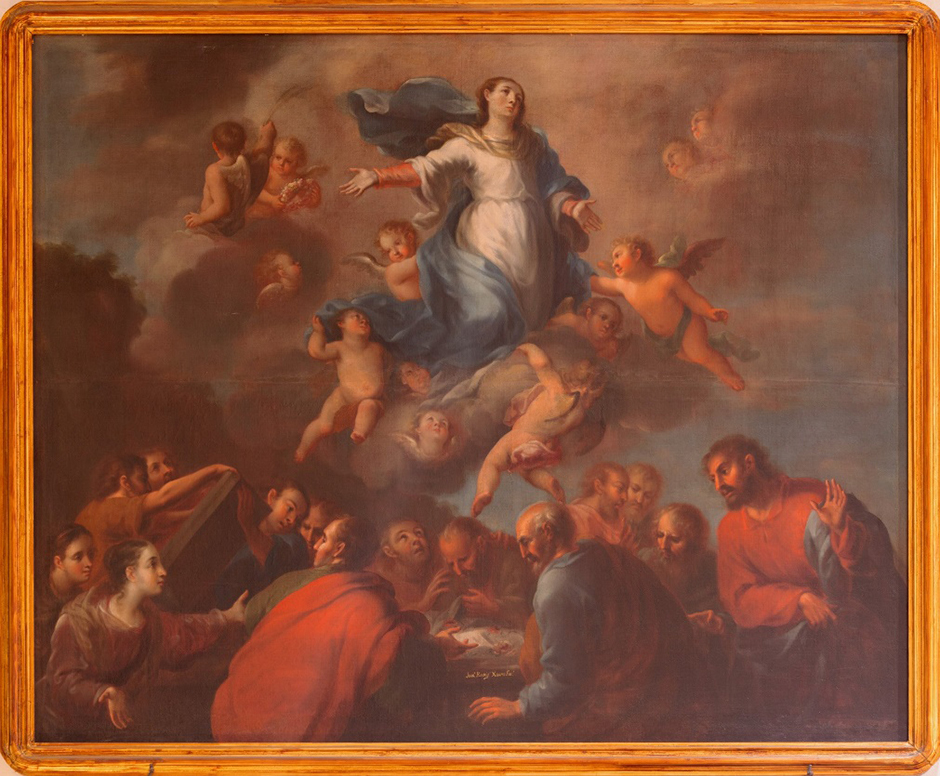
Another lovely painting by Rodriguez is within the apse, beyond the chancel, and to the right of the altar. It shows Candlemas, known as Candelaria in Mexico, which commemorates the presentation of Jesus in the temple, forty days after birth.
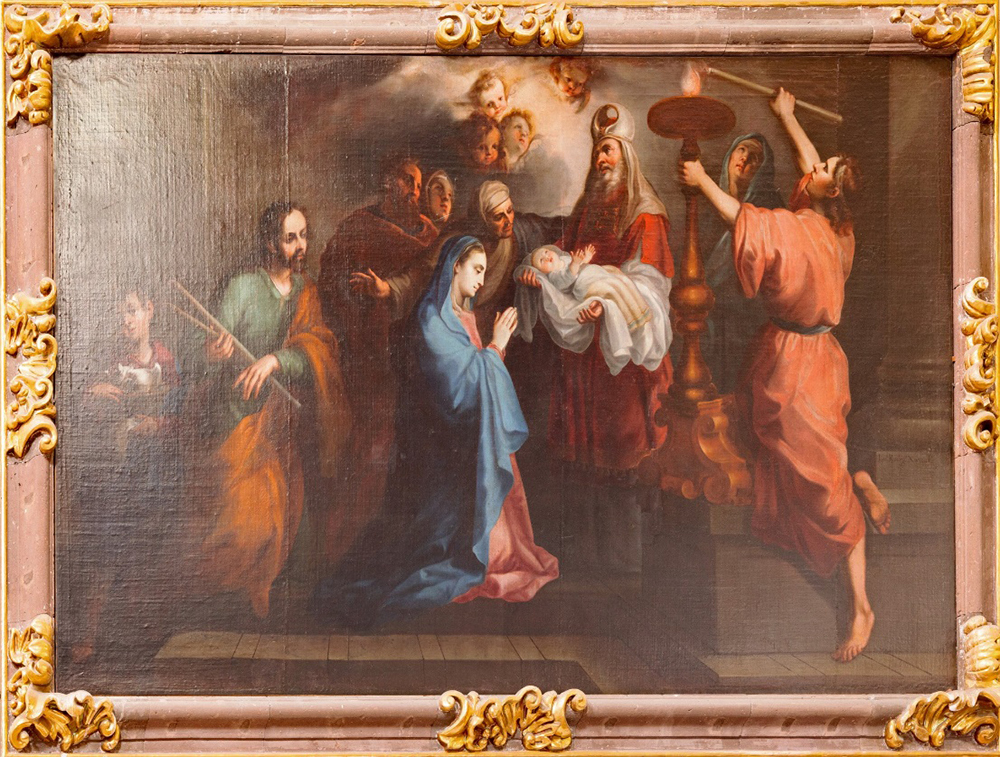
The feast takes place on February 2, and closes the celebrations related to Christmas, which in Mexico begin on December 12. The painting is magnificent, although the colors have lost their glow with age. Thanks to photography, we can appreciate its full beauty.
On the opposite wall there is another masterful painting, it is titled Adoracion de los Pastores—the Adoration of the Shepherds. Unfortunately, we do not have the name of the painter.
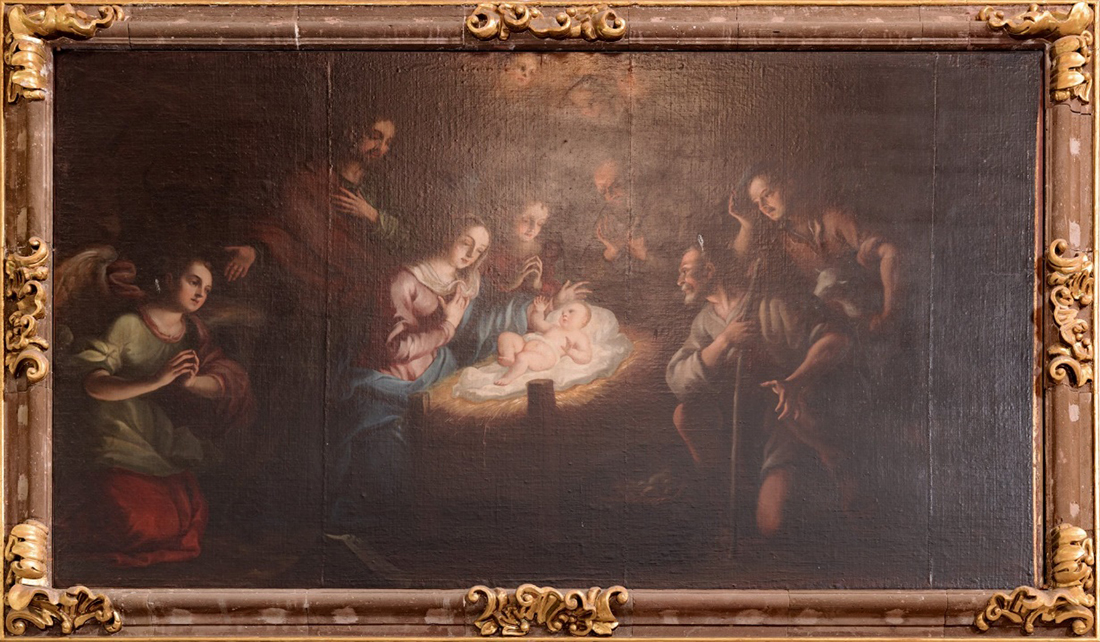
This is a partial list of the works on display in the Parroquia, and I will continue with many of the others in the next article. The ones mentioned here are all visible to any visitor, they are part of the public art gallery that we have available, to enjoy whenever we step into this church.
**************
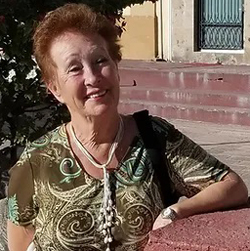
Natalie Taylor, born to Ukrainian parents, grew up in Argentina, where her family fled after WWII. They eventually moved to the U.S., and she spent most of her adult life there. She has a journalism degree, and an MFA in creative writing from Vermont College, Montpelier, VT. Her short stories, and poetry have been published in numerous literary magazines, and she has received several literary awards. She and her husband currently reside in San Miguel, where she has a weekly column in Atención, for which she also does translations. She has two books about San Miguel, available on Amazon or at the Tesoros Book Store: "Of All the Towns in All the World," and "SMA Self-Guided Historical Walking Tour." Her memoir, "The Tango House," will be coming out soon.
www.natalietaylor.org
**************
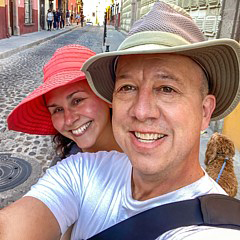
Jack Paulus has lived in SMA for a year and a half but this was his first Semana Santa. Before moving here he spent decades in the movie industry (Pixar). There expressing creativity collectively involved hundreds of other people. He observes, "I have been taking photos since the age of 12 and now I enjoy capturing life around me in images in a solo capacity."
**************
*****
Please contribute to Lokkal,
SMA's online collective:
 ***
***
Discover Lokkal:
Watch the two-minute video below.
Then, just below that, scroll down SMA's Community Wall.
Mission

Visit SMA's Social Network
